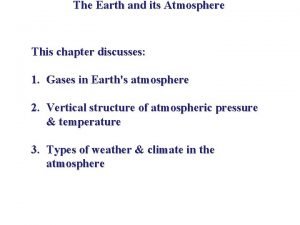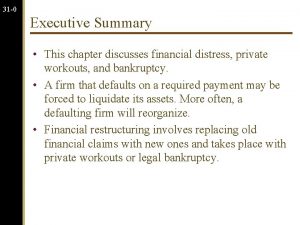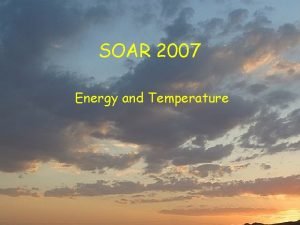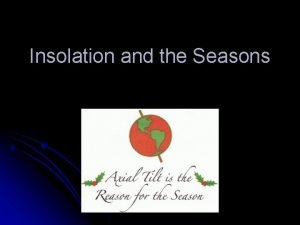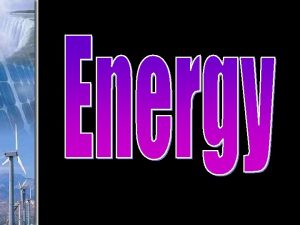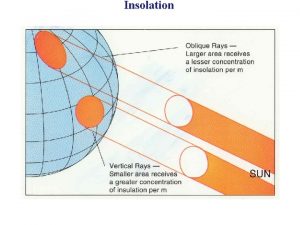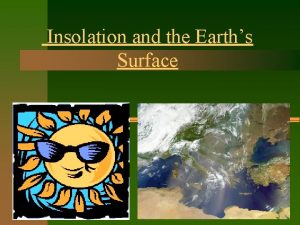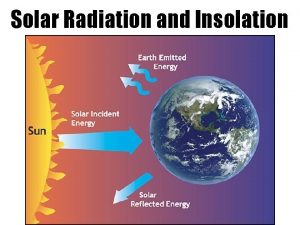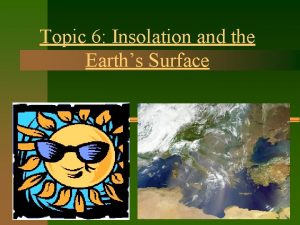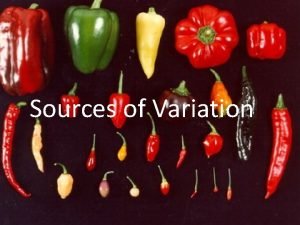Variation of Insolation This chapter discusses 1 The









- Slides: 9

Variation of Insolation This chapter discusses: 1. The role of Earth's tilt, revolution, & rotatation in causing locational, seasonal, & daily temperature variations 2. Methods & tools for measuring temperature

Variation in Intensity and Angle of Insolation Figure 3. 2 • Rate solar energy received by given area per unit time is intensity of insolation • Insolation strikes surface 90 perpendicular, maximum intensity • Decreases from 90 D to 0 D, insolation spread out over greater area • Smaller angles incidence, intensity insolation decreases heating effect • Lower angles- less insolation, less heat, l; ower temps

Effect Earth’s Shape, Thickness Atmosphere • Each degree latitude N, S of place where insolation perpendicular • Angle incidence 1 d less • More atmosphere rays pass through, greater absorption, reflection, refraction, scattering rays • Less transmission to Earth surface • Cooler temps at surface

Effect of Latitude • Intensity insolation greater at equator during equinox • Decreases with increasing latitude • Insolation perpendicular to surface at equator at each equinox • March 21 - Spring • Fall- September 23 • 1 st summer Northern Hemisphere perpendicular 23 ½ latitude • Maximum at Tropic Cancer • 1 st day winter perpendicular 23 ½ S - Tropic Capricorn

Effect Time of day Figure 3. 3 Angle insolation changes with seasons Lowest angle 42 N winter solstice Higher angle- summer solstice Angle incidence & insolation decreases by 1 degree from perpendicular insolation point

Variation in Duration of Insolation • Length of time insolation received- time between sunrise, sunset duration of insolation • # hours sun visible daily • Longest summer solstice June 21 • Shortest winter solstice December 21 • March 21, September 23 equal 12 hours

Surface Temp & Insolation • • Energy gained at greater rate than lostsurface temp rises Energy lost faster than gained- temp falls Temp higher when intensity insolation greater Higher when duration insolation longer

Yearly Min, Max Temp • Maximum intensity, duration insolation June 21 • Spring, early summer intensity, duration insolation decrease • Surface receives more energy of insolation that it loses by radiation • Temp goes up • June 21 - less energy received but more than lost so temp goes up • Gets colder when energy loss is more than energy gained

Time Daily Max, Min Temp • Hottest part day mid afternoon • Coolest temps occur just after sunrise


